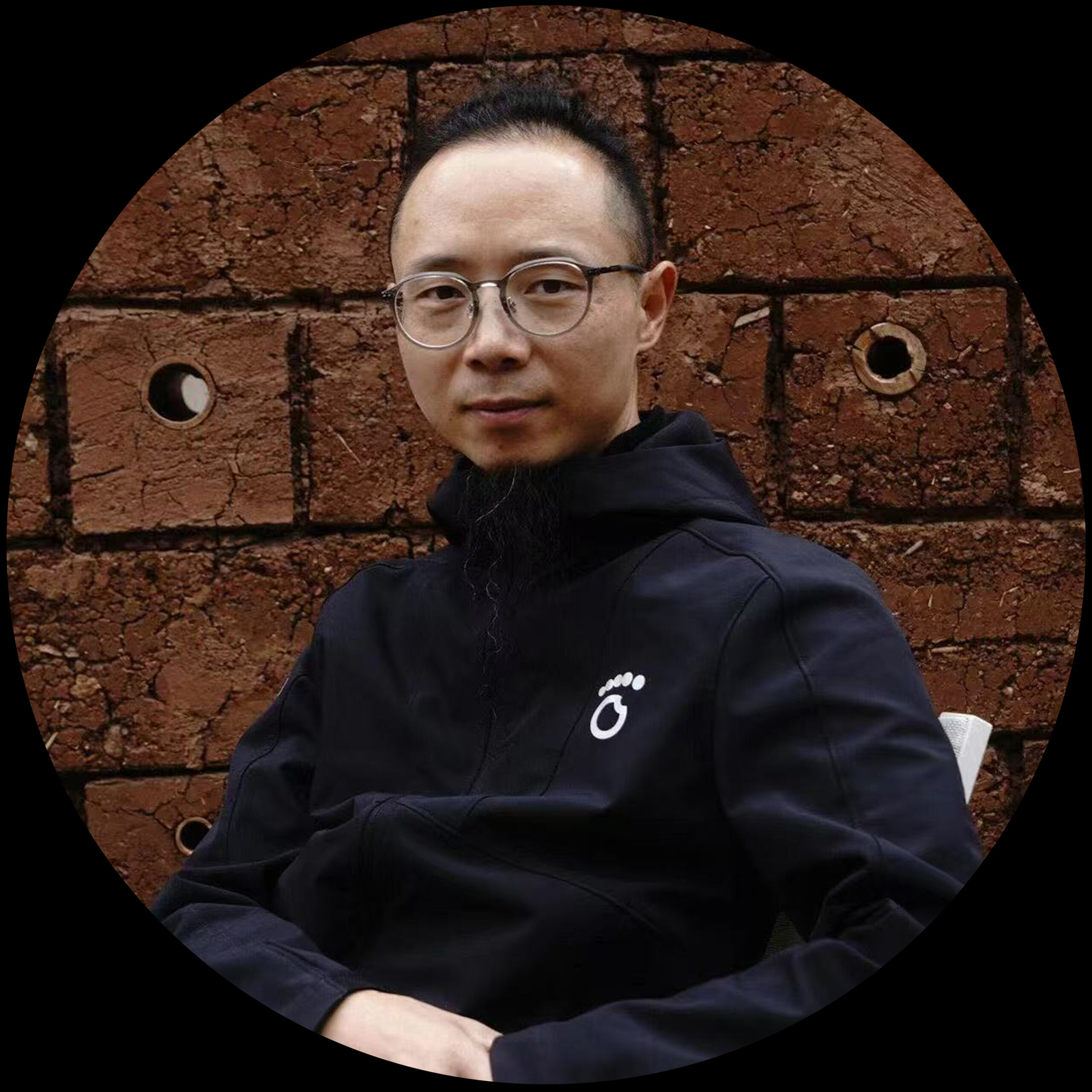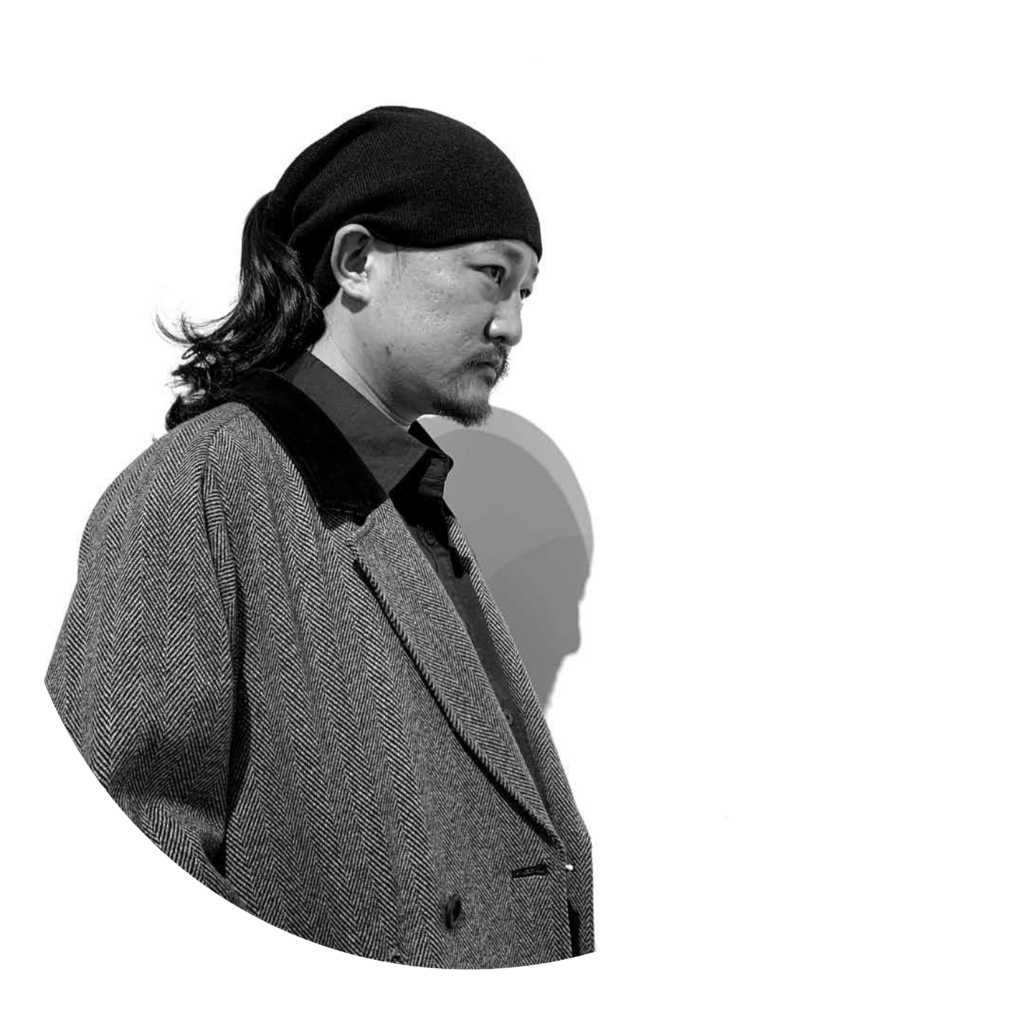
罗菲 Luo Fei
批评家,策展人 Critic, Curator
文/罗菲 2021.08
“闯入者” —王彦鑫的艺术观察
在观众面前不断扇自己耳光又持续喊出“history is good for you”……
口含一把匕首,在城市骑行,从白天持续到深夜……
把自己的体温留给一栋建筑……
在废弃厂矿举办个人演唱会……
在日本福岛核辐射隔离区,身穿有led灯管的衣服,如幽灵般舞蹈……
这些画面来自行为艺术家王彦鑫的部分作品,王彦鑫的作品给人一种混合着个人英雄主义的豪迈感和戏谑游戏的亢奋感的印象,它们通常以类似短幕剧的形式展开,但随即又会让人陷入莫名的悲伤,一些愤怒的情绪在他强劲的行动和表现决绝的意志中间蔓延。自我惩罚、挑衅观众或者一场宣泄,他会在失控的边缘展开行动。他的现场看上去很野性,也时常让人感到震惊甚至受到惊吓。
另一方面,王彦鑫对那些失去的生命与记忆有着特殊的情绪:消失的厂矿、落入大海的针、福岛上被核污染的居民物品、街头死去的昆虫……他尝试用自己的行动去挽回什么(当然是死亡或者尊严)。尽管终将徒劳,留下一具威风凛凛却又伤痕累累的身体。他曾在日本的一座寺庙看见这样一句话:人生除了死亡,全是擦伤。这样一种悲情与他作品中的情绪遥相呼应。
野性与悲情,构成他身体内在的张力。在悖论与张力之处展开工作,在有限性与偶然性中寻求力量感,在必然疲惫并终将死去的身体上赋予某种荣光,这提示出身体作为媒介的行为艺术如何展开自身的叙事。作为表演媒介的身体与艺术家自身的生命状态不分彼此。在王彦鑫看来,行为艺术是行动而非表演。现场行动即是一次又一次有关生命的修行。
最近两个月,在云南丽江和昆明驻地期间,王彦鑫以金身的面貌出现:他深夜矗立在乡间路边的大树上,借着偶尔路过的汽车灯光出场,他像一尊鬼魅的雕像,时隐时现,大多数时候,他只是在黑寂中与虫鸣蛙声融为一片……黎明到来之前,他背负着一扇古老院落的门步行到湖边,为门刷上金漆,初升的朝阳刚好映照在金门上,远远望去,雪山下一扇金灿夺目的古门,仿佛通向永恒世界的通道……他又在湖边点燃一颗枯树枝,如焰火照亮夜空,他在一旁用藤条鞭打水面,鞭打的声响与熊熊烈火如末世警钟一般响彻高原湖泊……他又在山野里徒手放飞两只巨大的风筝,风筝上分别写着“如日中天”和“命悬一线”,在狂风中他努力保持它们在空中飞扬……在另一组画面中,他骑上一匹金马,俨如一名巡视武官在风景中站立,又在烈焰面前纹丝不动,眼神坚定……在暗夜里,他骑上金马潜入村落,挨家挨户驻足巡视……在一段废弃的铁路隧道里,他在身后燃放一百响烟花,他兀立在绚烂的烟花面前,任凭燃烧的火药在狭窄的空间里四处乱窜,不断擦伤烧伤他金色的肉身……他又用两块打火石,在黑洞里反复碰撞一千零一次,尝试留下偶尔闪烁的微弱的光……
这样一系列的作品被命名为“金色寓言”,带着史诗般的气质。
危险的处境,场景在切换。火焰与光线、金马与暗夜、狂风与湖面、肉身与金身……他总是在制造一个人的战斗,你能从他作品中感到身体与环境的对抗。
身处异乡的身体是敏感的,时间、光线、温度、湿度、地貌、风、物件、周围的人还有当地的传说,都可能成为被艺术家吸收借用的因素,成为现场魅力的一部分。王彦鑫的很多创作都是在不同地方不同场景里完成,这一方面说明行为艺术家的工作方式通常在不同的驻地项目、艺术节完成作品,另一方面也提示出王彦鑫的工作方法与身体观念:让一个角色化的身体(比如金身)进入一个由不同文化、地理条件和时间因素构成的现场,让身体与现场相互激活。王彦鑫强调身体行动在现场的介入能力,然后将环境转换为一种处境——人的处境,准确的说,是人面对死亡的处境。等待、抗拒、笃定或者庆祝……
在这个必然朽坏又动荡不安的世界,骑着金马而来的“金身王彦鑫”俨如一个闯入者,在黑寂与枯木之中,在艳阳与烈焰之下,遭遇“肉身的世界”,接受磨难。
对王彦鑫而言,金色可能象征着一种结局。而这样一系列带有末世色彩的“金色寓言”,让人想起启示录里的诸异象,在等待结局到来之前,我们已经深受震撼。
2021年8月9日雨夜,昆明
"Intruder" — An Art Observation of Wang Yanxin
Slapping his own face in front of the audience while repeatedly shouting “history is good for you”…
Riding through the city with a dagger in his mouth, from day to night…
Leaving his body temperature behind on a building…
Holding a personal concert in an abandoned factory…
Dressed in an LED-lit costume, dancing like a ghost in the Fukushima nuclear contamination exclusion zone…
These images are part of performance artist Wang Yanxin’s works, which leave an impression of a mix between personal heroism and a frenzied sense of playful satire. His pieces typically unfold like short theatrical scenes, only to suddenly plunge the audience into an inexplicable sadness. A sense of anger permeates his strong actions and resolute will. Self-punishment, provocation of the audience, or an emotional release—Wang Yanxin’s performances often occur on the edge of losing control. His live performances have a raw, untamed quality, often shocking and even frightening the viewers.
On the other hand, Wang Yanxin has a special emotional connection to lost lives and memories: the vanished factories, the needles lost in the sea, the irradiated residents’ belongings in Fukushima, the dead insects on the street… He tries to use his actions to salvage something (perhaps death or dignity). Although ultimately futile, his body remains powerful yet scarred. He once saw a phrase in a Japanese temple: “In life, everything is a scratch except death.” This tragic sentiment resonates deeply with the emotions in his works.
Wildness and tragedy form the internal tension of his body. He works within paradoxes and tensions, seeking strength in the limits and randomness of the body. He imparts a kind of glory to a body that is inevitably weary and doomed to die, hinting at how performance art can unfold its own narrative through the body as a medium. For Wang Yanxin, performance art is action, not a staged performance. The act itself becomes a repeated ritual about life.
In the past two months, during his residencies in Lijiang and Kunming, Wang Yanxin appeared in the guise of a golden figure: standing in the dark of night beside a country road, illuminated only by passing car headlights, he resembled a ghostly statue—appearing and disappearing, blending into the silence of the night and the sounds of insects and frogs. Before dawn, he carried an ancient courtyard door to a lakeside and painted it gold. The rising sun reflected off the golden door, which from a distance looked like an ancient gateway to eternity beneath the snow-capped mountains. He then lit a dry branch by the lake, the flames illuminating the night sky. Nearby, he struck the water’s surface with a vine whip, the sound of the lash and the roaring fire ringing through the highland lake like a doomsday alarm. In another piece, he launched two giant kites in the wilderness, inscribed with “Like the Sun at Noon” and “Hanging by a Thread,” struggling to keep them airborne in the fierce wind. In yet another image, he mounted a golden horse, standing like a military officer surveying the landscape, motionless in the face of raging flames, his gaze unwavering. Later, in the dead of night, he rode the golden horse through a village, stopping at each house to observe. In an abandoned railway tunnel, he set off one hundred fireworks behind him, standing resolutely before the dazzling display, letting the burning gunpowder scatter in the narrow space, injuring his golden body with each spark. Lastly, he struck two flint stones together one thousand and one times in a dark void, trying to create a fleeting spark of light.
This series of works was named Golden Fable, with an epic quality about it. Dangerous situations, shifting scenes: fire and light, the golden horse and the dark night, strong winds and the lake, the body and the golden form… He is constantly creating a battle for the individual. From his works, you can feel the confrontation between the body and the environment.
The body in a foreign land is sensitive. Time, light, temperature, humidity, topography, wind, objects, people, and local legends—each of these can become a factor that the artist absorbs and uses, becoming a part of the live performance’s charm. Many of Wang Yanxin’s works are completed in different places and settings, which not only highlights the artist’s method of working across various residency projects and art festivals but also points to his approach to the body: placing a role-like body (such as the golden figure) into a live environment shaped by different cultures, geography, and time, allowing the body and the setting to activate each other. Wang Yanxin emphasizes the intervention of the body’s actions in the site-specific environment, transforming the environment into a situation—the human situation, more specifically, the situation of humanity facing death. Waiting, resisting, being determined, or celebrating…
In this world, which is bound to decay and full of turbulence, the “Golden Wang Yanxin” arriving on horseback is like an intruder, encountering the “world of the flesh” in the midst of darkness and withered wood, under the scorching sun and roaring flames, accepting suffering.
For Wang Yanxin, the golden might symbolize an ending. These “Golden Fables,” tinged with apocalyptic hues, bring to mind the visions in the Book of Revelation. Before the final outcome arrives, we are already deeply shaken.
August 9, 2021, Luo Fei,Rainy Night, Kunming
// 最近新作Recent Post
// 分类Categories

1988年生于甘肃兰州,2013年毕业于四川美术学院新媒体系,现工作生活于成都,任教四川文化艺术学院,副教授。
Wang Yanxin, born in 1988 in Lanzhou, Gansu, China. graduated from Sichuan Fine Arts Institute in 2013. Since 2012, he has been engaged in multimedia artistic creation based on performance art. He currently lives and works in Chengdu and is a professor at Sichuan Conservatory of Culture and Arts.
- Chengdu, Sichuan, China
- +86 15215015022
订阅Newsletter
Copyright by wangyanxin.com. 版权所有.

-1.png)
